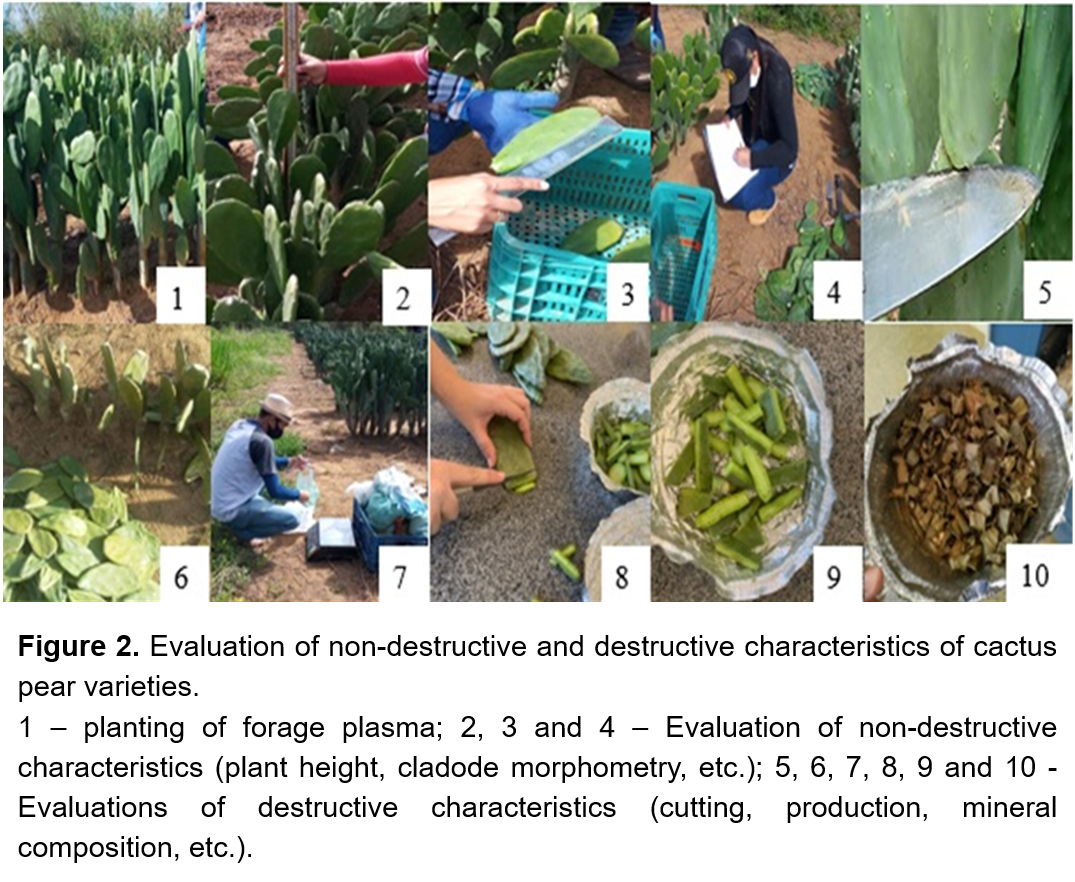Agronomic and mineral characterization of cactus varieties under different doses of phosphorus
DOI:
https://doi.org/10.56890/jpacd.v25i.455Keywords:
growth; fertilization; Nopalea sp.; Opuntia sp.; yield of forage.Abstract
The forage cactus stands out in animal feed, as it adapts to the climatic conditions of the semi-arid region and has a high-water content with benefits for animals fed with this forage plant. The objective of this study was to evaluate the agronomic and mineral characteristics of different forage cactus varieties managed under phosphate fertilization. A randomized blocks design was used, with split-plots in the space, the plots being the forage cactus varieties (Giant sweet clone (Nopalea cochenillifera (L.) Mill.), Little sweet clone (Nopalea cochenillifera (L.) Mill) and Mexicana (Opuntia tuna (L.) Mill)) and the subplots the doses of phosphorus (0, 30, 60 and 90 kg P ha-1 year), with four repetitions. The evaluations and cuts were performed two years after planting. The data were submitted to analysis of variance with significance level of 5%. In the mean comparison between the forage cactus pear varieties, the Tukey’s test was used. Statistical analyzes were performed using the software SISVAR. The variety Mexicana presented higher values of perimeter, width, and green mass per plant. The variety Giant sweet clone obtained higher values of thickness and length. The highest number of cladodes and the shortest length, perimeter and width were observed on the variety Little sweet clone. Regarding the variety Little sweet clone, a quadratic response was observed for the mineral matter, calcium, zinc and manganese contents and linear response for phosphorus and iron contents, in relation to the increase of phosphorus doses. Mexicana and Giant sweet clone varieties presented quadratic response in the doses of phosphorus for calcium, iron, zinc, and manganese contents. Phosphate fertilization promotes important changes in the agronomic characteristics of the cactus pear varieties, especially in the increase of cladodes and yield. The minerals of the cactus pear are affected by the dosage of the phosphate fertilizer and by the genotypic difference of the plant.
Publication Facts
Reviewer profiles N/A
Author statements
Indexed in
- Academic society
- Journal of the Professional Association for Cactus Development
- Publisher
- Professional Association for Cactus Development




